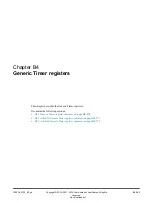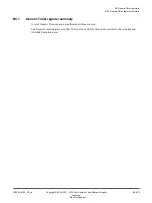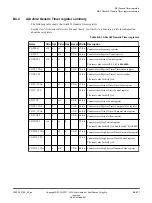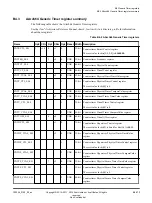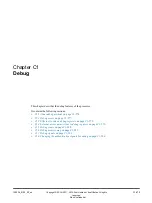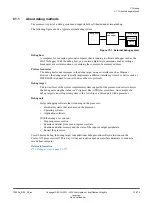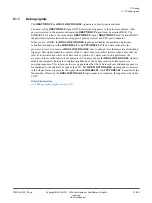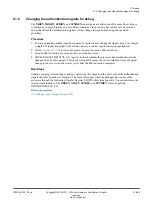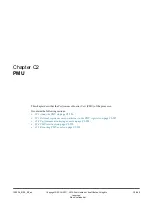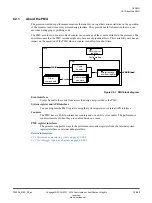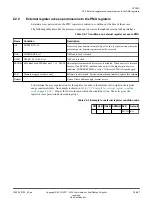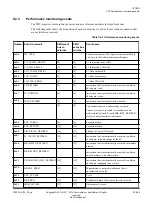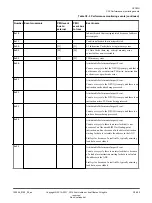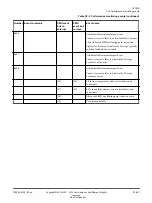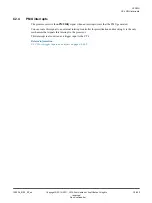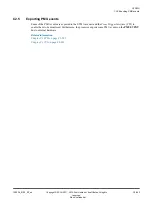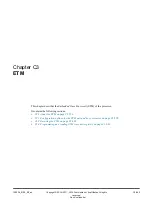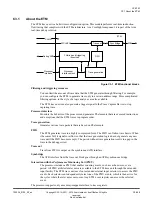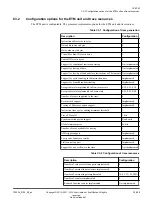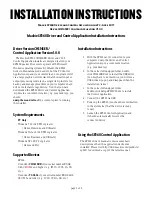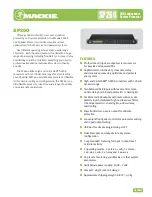
C1.7
Debug signals
The
DBGPWRDUP
and
DBGL1RSTDISABLE
signals are subject to particular rules.
You must set the
DBGPWRDUP
signal LOW before removing power to the processor domain. After
power is restored to the processor domain, the
DBGPWRDUP
signal must be asserted HIGH. The
EDPRSR.PU bit reflects the value of this
DBGPWRDUP
signal.
DBGPWRDUP
must be tied HIGH if
the particular implementation does not support separate processor and SCU power domains.
When you set it HIGH, the
DBGL1RSTDISABLE
input signal disables the automatic, hardware-
controlled invalidation with
nCORERESET
or
nCPUPORESET
of the L1 data cache after the
processor is reset. You must use
DBGL1RSTDISABLE
only to debug a reset that an external watchdog
triggered. This signal makes the contents of the L1 data cache from before the reset observable after the
reset. If reset is asserted while an L1 data cache eviction or L1 data cache fetch is performed, the
accuracy of those cache entries is not guaranteed. You must not use the
DBGL1RSTDISABLE
signal to
disable the automatic, hardware controlled invalidation of the L1 data cache in normal processor
powerup sequences. This is because there is no guarantee that the L1 data cache invalidation sequence is
synchronized to the duplicate L1 tags in the SCU. The
DBGL1RSTDISABLE
signal applies to all cores
in the cluster. Each core samples the signal when
nCORERESET
or
nCPUPORESET
is asserted. If the
functionality offered by the
DBGL1RSTDISABLE
input signal is not required, the input must be tied to
LOW.
Related information
A.14 Debug signals
C1 Debug
C1.7 Debug signals
100236_0100_00_en
Copyright © 2015–2017, 2019 Arm Limited or its affiliates. All rights
reserved.
C1-583
Non-Confidential
Summary of Contents for Cortex-A35
Page 4: ......
Page 18: ......
Page 26: ......
Page 27: ...Part A Functional Description ...
Page 28: ......
Page 145: ...Part B Register Descriptions ...
Page 146: ......
Page 573: ...Part C Debug ...
Page 574: ......
Page 845: ...Part D Appendices ...
Page 846: ......

